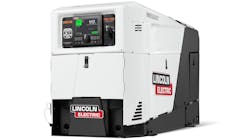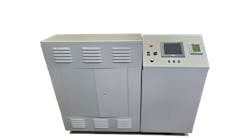BY CANDACE ROULO
Of CONTRACTOR’s staff
WASHINGTON — The Environmental Protection Agency’s WaterSense for Homes specifications for single-family new homes were revised this May, based on public comments and additional research, regarding the original draft’s specifications. The recent revision addresses efficient plumbing fixtures, hot water delivery systems and other aspects of the original specification, but does not specify anything about certified or qualified plumbers working on WaterSense homes.
Once the WaterSense for Homes specification draft is finalized, it will ensure that future WaterSense-labeled homes use 20% less water than standard new homes while reducing builders’ costs, according to the EPA. These specifications will apply to new single-family homes and townhouses that are three stories or less, and built by a WaterSense builder.
According to Virginia Lee, marketing and outreach specialist for EPA’s WaterSense Program, the agency considered more than 100 comments on the original draft of the specification, and all comments had an effect on the revised specification.
The Plumbing-Heating-Cooling Contractor’s – National Association, which has been actively involved with WaterSense since 2008, responded to the original specification with concerns about qualified plumbers installing water-saving devices.
“When the specification for a revised draft first came out, we immediately responded with a request to include plumbing contractors and their plumber employees in the draft,” said Ike Casey, PHCC-NA's executive vice president. “We are very concerned that untrained individuals will install WaterSense products in new homes and the system will not conserve water as it is designed to.”
At this time, there are no specifications in the WaterSense for Homes revised draft for builders to select properly trained plumbing contractors, according to Casey.
“We will continue to push the EPA toward requiring properly licensed or certified plumbing contractors to do the installations before a home receives the WaterSense label,” said Casey.
Once EPA finalizes the WaterSense for Homes specifications, builders will be invited to become official program partners and build and label their homes, according to Lee, and different contractors are familiar with the water-efficient products and technologies required by the specification.
WaterSense will also provide builders with supplemental materials, explaining the criteria that they can use or share with sub-contractors.
Many well-trained plumbers have the basic knowledge to install water-saving devices in new homes, according to Casey, but PHCC wants to ensure that properly licensed or certified plumbing contractors will do the installations before a home receives the WaterSense label.
PHCC has partnered with GreenPlumbers USA to provide green training for plumbers who want to specialize in this area. The association and its chapters also offer other green-related seminars throughout the country.
“We are advising our members to make sure everyone knows when they complete green-related training/certification by promoting it on their Web site and in press releases, including it on bid qualifications, etc.,” said Casey.
Revisions to specs
Many specifications were revised in the indoor water-efficiency category of the original WaterSense for Homes specification draft. A requirement for using all insulated hot water pipes was eliminated; the performance requirements for hot water delivery systems were revised; and criteria for checking all water-using fixtures, appliances and equipment was added, along with a water softeners requirement.
According to the EPA, requiring that hot water pipes be insulated was eliminated because there was not enough data to support water savings from the delivery of hot water through insulated pipes when draws are not concurrent, even though insulating hot water pipes located below-grade, below-slab, and in crawlspaces may be cost effective in some climates.
Calculations reflecting increased pipe diameters and greater distances between hot water sources and the farthest plumbing fixtures were also revised. Based on this, more builders will be able to participate in the program while the objective to install water-efficient hot water delivery systems is met.
The EPA also determined that a maximum of 0.60-gal. of water stored in the piping between the hot water source and any hot water fixture would accommodate the maximum allowable distances to fixtures from the hot water source (20-ft.-30-ft.) and the combination of pipe sizes (e.g., 3/4-in. trunks, ½-in. branches) used to make the connections.
The EPA also decided that using a performance-based standard instead of specifying that only specific water systems can be used, will give builders flexibility and accommodate a variety of floor plans. Demand-initiated hot water recirculating, whole house manifold and core plumbing systems were specified for use in the first draft. EPA believes that these three systems will be used mostly by builders even thought a performance-based standard will be used.
A requirement for inspectors to check for leaks, all visible supply connections, valves, water-using fixtures, appliances or equipment was also added to the specification. The revised draft also includes significant changes to outdoor water efficiency and homeowner education criteria, and improvements to the water budget tool.
Pilot program
At this time, seven builders are participating in the pilot program for WaterSense for Homes, which started in 2008. These builders have committed to build at least one new home that meets the program’s water efficiency specifications.
According to the EPA, which received comments from the builders and inspectors involved in the pilot program, it should not cost more for inspectors to look for leaks as they verify the fixtures, appliances and other equipment installed in the home.
Van Guard Homes, one of the pilot builders, built the first WaterSense labeled home in the country, in Chapel Hill, N.C., last year. The home received the WaterSense for Homes label last November.
“Through the WaterSense New Homes Pilot Program, we can lay a strong foundation for environmental progress,” said EPA Administrator Stephen L. Johnson. “As the program encourages installation of products that save water and money, homeowners are realizing first-hand the benefits of efficient water use.”
The public can comment on the revised WaterSense for Homes specifications until July 7, 2009. The EPA also plans to hold at least one public meeting on the revisions this month. The release of the final WaterSense for Homes specifications is scheduled for this November.
Latest from Fixtures
Latest from Fixtures
Voice your opinion!
Voice your opinion!
To join the conversation, and become an exclusive member of Contractor, create an account today!
Sponsored Recommendations
Sponsored Recommendations

